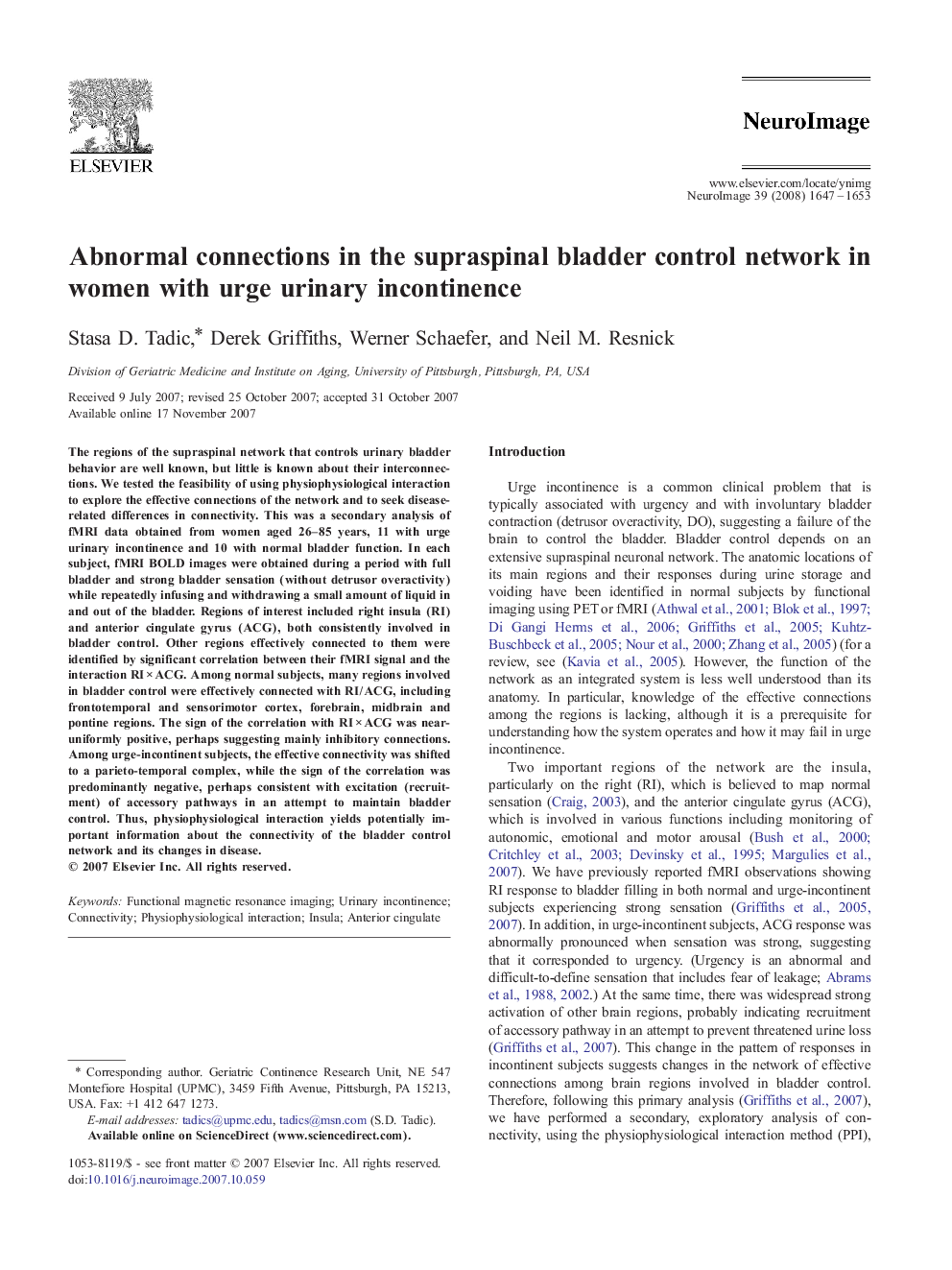| Article ID | Journal | Published Year | Pages | File Type |
|---|---|---|---|---|
| 3073378 | NeuroImage | 2008 | 7 Pages |
The regions of the supraspinal network that controls urinary bladder behavior are well known, but little is known about their interconnections. We tested the feasibility of using physiophysiological interaction to explore the effective connections of the network and to seek disease-related differences in connectivity. This was a secondary analysis of fMRI data obtained from women aged 26–85 years, 11 with urge urinary incontinence and 10 with normal bladder function. In each subject, fMRI BOLD images were obtained during a period with full bladder and strong bladder sensation (without detrusor overactivity) while repeatedly infusing and withdrawing a small amount of liquid in and out of the bladder. Regions of interest included right insula (RI) and anterior cingulate gyrus (ACG), both consistently involved in bladder control. Other regions effectively connected to them were identified by significant correlation between their fMRI signal and the interaction RI × ACG. Among normal subjects, many regions involved in bladder control were effectively connected with RI/ACG, including frontotemporal and sensorimotor cortex, forebrain, midbrain and pontine regions. The sign of the correlation with RI × ACG was near-uniformly positive, perhaps suggesting mainly inhibitory connections. Among urge-incontinent subjects, the effective connectivity was shifted to a parieto-temporal complex, while the sign of the correlation was predominantly negative, perhaps consistent with excitation (recruitment) of accessory pathways in an attempt to maintain bladder control. Thus, physiophysiological interaction yields potentially important information about the connectivity of the bladder control network and its changes in disease.
